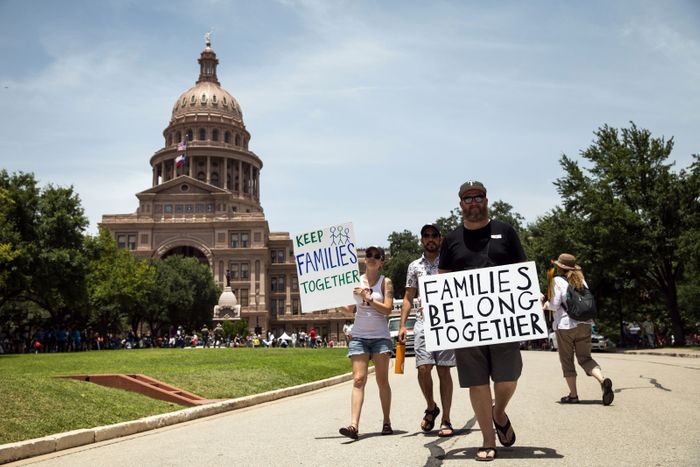
As the whole world tried to absorb a horrendous act of applied racism from El Paso over the weekend, a fourth House Republican incumbent headed for the exits. The Dallas Morning News reports:
Eight-term Rep. Kenny Marchant, who narrowly won reelection last November, is now the fourth Texas Republican congressman in recent days to pick retirement over an uphill fight for political survival next year.
The growing exodus — or “Texodus,” as Democrats have gleefully characterized the parade of departures — both reflects and accelerates the GOP’s fading grip on Texas. Three of the retirements come in highly competitive districts that Democrats have a good shot of flipping.
These retirements (and others like them elsewhere) will definitely erode the already slim odds of a Republican reconquest of the House next year. But their concentration in the Lone Star State could represent a much bigger problem for the GOP. If Texas starts turning blue, the Republican presidential electoral map instantly becomes problematic.
Yes, Democrats have fantasized endlessly about turning their minority voter strength into a force that could flip Sun Belt states ranging from Georgia to Arizona, with Texas smack-dab in the middle of their dreams. Texas hasn’t gone Democratic in a presidential contest since 1976, when Jimmy Carter’s appeal to conservative Democrats who had been in the process of leaving their party kept them temporarily aboard. (Ronald Reagan thrashed Carter in the Lone Star State by nearly 14 points in 1980.) But there are signs that the great gettin’ up morning for Texas Democrats could be approaching, at least as long as Donald Trump continues to alienate suburban voters while energizing Latinos to vote against his party. RealClearPolitics election analyst Sean Trende thinks the state is changing very rapidly:
So let’s just say for the sake of argument that Sean’s right, and that Democrats can for real put Texas (and Arizona) in play in 2020. Together they have 49 electoral votes. The famous trio of Rust Belt states that Trump narrowly won to pull off his Electoral College inside straight in 2016 — Michigan, Pennsylvania, and Wisconsin — have 46.
If nothing else, the wave of Texas Republican congressional retirements will ensure that Democrats put a lot of resources into the state, increasing the chances that it will become a presidential (and perhaps Senate!) battleground. But from a big-picture perspective, nothing would better illustrate the political downside of Trumpism than this state, which Republicans have for years claimed as a veritable showcase of conservative governance slipping from their grip. The president’s big El Paso rally in February, in which he articulated fury at immigrants echoed by the murderer who struck that city on Saturday, may have been something of a Last Hurrah. Remember it? Rolling Stone reports:
Trump chose El Paso for his first 2020 campaign rally because of its location on the U.S.-Mexico border, and it goes without saying that the speech was rife with the same kind of misleading rhetoric he has been peddling since he shut down the government over border wall funding in December. He instructed people to disregard the media’s statistic-based reports about border security. At one point, he chanted “murders, murders, murders, killings, murders” as a way to pummel home a point about illegal immigrants.
It would be fitting if Trump and his infinitely compliant party paid an immediate price for his nativist stylings deep in the heart of Texas.






























